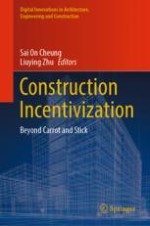2023 | OriginalPaper | Chapter
12. Voluntary Participation as an Incentive of Construction Dispute Mediation—A Reality Check
Author : Nan Cao
Published in: Construction Incentivization
Publisher: Springer International Publishing
Activate our intelligent search to find suitable subject content or patents.
Select sections of text to find matching patents with Artificial Intelligence. powered by
Select sections of text to find additional relevant content using AI-assisted search. powered by
